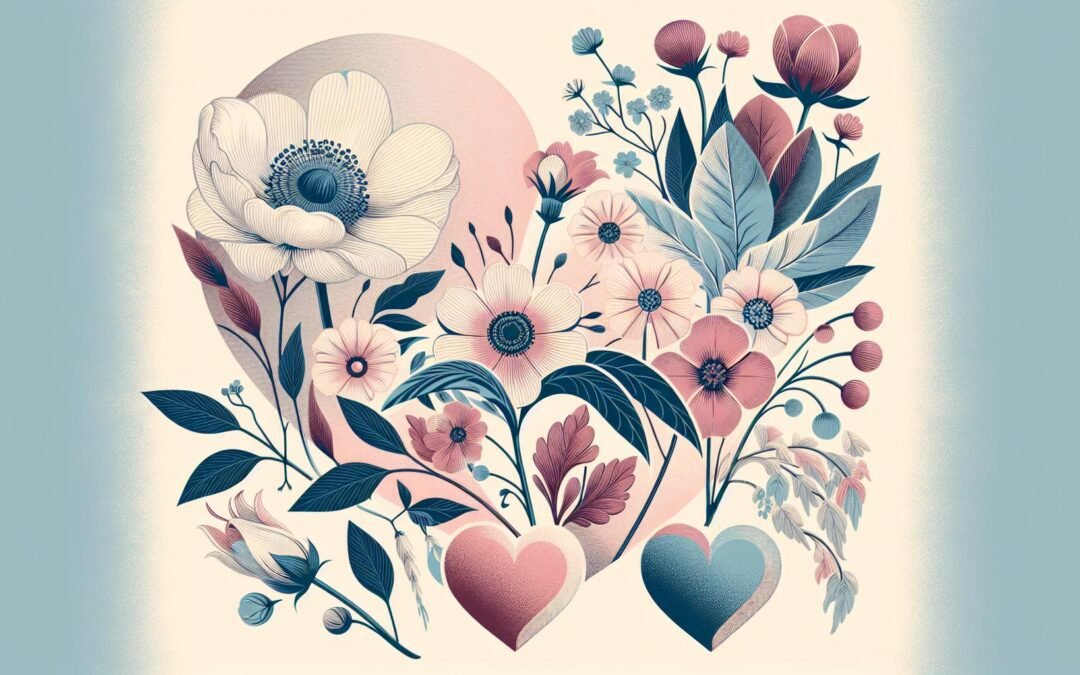An exploration of the world’s most celebrated poetic traditions reveals a continuous reinvention of love poetry. Deep love poems absorb the social, religious, and linguistic contours of their origins, expanding with new metaphors, voices, and contradictions. Through these works, intense yearning, devotion, and transformation appear, redefining human connection across centuries and continents.
Historical Evolution of Deep Love Poems
Sumerian poetry in the third millennium BCE marks the beginning of emotional lyric, expressed as ceremonial invocation. On clay tablets, the “Song of Songs” entwines fertility, sacred union, and longing. Inanna’s praises for Dumuzi introduce language woven with agricultural metaphors and ecstatic union. As time advances, Greek lyric poetry, especially Sappho of Lesbos, embraces an individualized voice. Her “Fragment 31” records passionate shock through images of fire, trembling, and sensory disruption. This transition from communal ritual to intimate self-expression reshapes the poetic landscape.
From Archaic Lament to Embodied Yearning
In the Sanskrit tradition, poets including Kalidasa, Jayadeva, and Mirabai immerse their verses in metaphysical longing. Here, love runs through corporeal and devotional modes, with Krishna and Radha or Shiva and Parvati reflecting tension between worldly and mystical attachment. Early Hebrew texts interlace sacred and sensual, as seen in the Shulammite’s pursuit in the Song of Solomon.
Troubadour poets in medieval Provence introduce “fin’amor,” a codified expression of desire within feudal society. Obedience, secrecy, and obstacles create a stylized vocabulary. The beloved appears as distant star or unattainable flower, fueling a tradition of yearning and restraint. Courtly conventions spread to northern and eastern Europe, appearing in Petrarch’s canzoniere as obsessive lists—the beloved’s glance, gait, and voice accumulate into endless catalogues. When Shakespeare inherits the Petrarchan sonnet, he transforms the mood by introducing wit and passion: Sonnet 18’s weather and ephemeral “buds” become metaphors for immortal emotion, blending devotion with vulnerability.
Romantic poets, including Wordsworth, Keats, Shelley, Hölderlin, and Pushkin, unravel love’s social obligations and propose it as a sublime mode of experience. Keats’s odes channel eros through mortality, suggesting that to love means to approach silence and dissolution. In the twentieth century, Neruda’s “Twenty Love Poems and a Song of Despair” presents nature as a field of unrelenting desire, using images of cherry trees, hunger, and tide. Rilke crafts intimacy through existential clarity, highlighting loss between self and beloved. Akhmatova transforms lyric into coded resistance under repression, weaving personal longing with collective peril. Recently, Adrienne Rich, Mahmoud Darwish, and Ocean Vuong redirect the energy of poetry toward resistance, migration, and the recovery of fractured selves.
Societal institutions shape the admissible vocabulary for passionate poetry. In Confucian China, ci poetry cultivates ambiguity, cloaking eroticism in nature’s symbolism. In Victorian England, the sonnet becomes a vehicle for domestic feeling, with silence and ellipsis multiplying barriers. Modern and postcolonial works respond to displacement; themes of absence and self-definition cross linguistic boundaries and reshape motifs with each new cultural encounter. The lexicon bends and narrows in response to these pressures, revealing shifts beneath the surface of language.
Defining and Analyzing Deep Love Poems in Poetic Discourse
No simple description suffices for the force of passionate lyric. Whereas infatuation stirs the mind, and physical desire concerns the body, deep love poems evoke layered emotions, durability, and ontological peril. Platonic attachment attends to mutual intellect and affinity. Poetry reconfigures these impulses into one current—absorbing erotic, sentimental, and cognitive registers—fashioning intimacy into a transformative state.
Theoretical Approaches: Semiotics, Space, and the Sacred
Roland Barthes, in his critical writing, examines the language of longing as a system of fluctuating signs. The text constructs meaning through fragmentation: every phrase augments, silence injures.* Gaston Bachelard considers intimacy spatially, asserting that passionate attachment forges a psychic geography—a dwelling informed by reverie and memory. Julia Kristeva explores abjection and the numinous, interpreting lyric passion as a confrontation with loss, where selfhood dissolves under the weight of intense yearning.
Pure feeling provides sheer force, intellect offers structure, and spiritual currents carry attachment toward transcendence or rupture. Persian ghazals merge spiritual and personal affection, with wine, flame, and night encrypting the beloved’s divinity. Dante’s Vita Nuova fuses bodily longing and spiritual awakening, linking sensuous encounter to cosmic design. Contemporary poets address vulnerability, mutual awareness, and the embrace of difference. The text becomes a crucible, reshaped by longing, memory, and recognition.
Semantic Precision and Lexical Choices
Terminological clarity distinguishes the subtle gradations of longing in poetry. Deep love poems employ layered vocabulary to portray sensory immediacy and philosophical complexity. Sappho incorporates rare Aeolic dialects, imparting intimacy and ancientness to her tone. In Renaissance sonnets, ornate Latinisms and ceremonial phrases grant formality and grandeur; terms such as “peradventure,” “enthral,” and “sovereign” mark the elevated register. Keats combines evocative phrases—“embalmed darkness”—to bind physicality with metaphysical vision.
Colloquial speech infuses modern texts with vulnerability and directness. Frank O’Hara merges everyday language with moments of tenderness; this collision of diction disrupts hierarchy and democratizes experience. Forough Farrokhzad, in “The Wind Will Carry Us,” blends abstraction with guttural immediacy, as in, “In my little night, alas, the wind has a rendezvous with the leaves,” where “little night” upends temporal assumptions, and the wind embodies amorous and existential chance.*
Poems by Ocean Vuong, including “On Earth We’re Briefly Gorgeous,” subordinate classical grandeur, relying instead on tactile detail—the cow’s teeth as buckets— to turn ordinary images into sources of immersion. Variant dialects and registers ensure that passionate poetry offers both historical reverence and present-tense realism.
Devices: Metaphor, Sound, and Syntactic Play
Metaphor anchors the structure of poetic works focused on devotion. Petrarch refers to eyes as suns, and Dante transforms Beatrice into an emblem of paradise, repositioning the beloved on a cosmic scale. Neruda channels hunger and bodily fragments into wider fields of desire through synecdoche and metonymy.
Synesthesia, exemplified by tasting a color or hearing a scent, endows experience with sensory depth. In Rilke’s verse, shifting syntax blurs the line between isolation and intimacy. Paradox introduces complexity, blending presence with solitude, fullness with absence. Anaphora creates incantatory rhythm; Elizabeth Barrett Browning’s lines expand dimension with repetition of “to the depth and breadth and height.” Enjambment imparts momentum, while caesura halts the reading, forcing awareness of each breath and pause. Chiasmus produces mirrored structures that enfold contradiction, as seen in Byron’s recalibration of pleasure and sin.
Sound remains essential: alliteration connects urgency and momentum, as in “Love’s labour lost”. Rumi’s poems layer vowel and consonant in shifting sequences, building longing through resonant euphony. Cacophony expresses disenchantment in lines from Edna St. Vincent Millay, where disruption amplifies solitude. Phonetic arrangement forms an undertow, drawing readers below the literal to the affective strata of the poem.
For deeper exploration, trusted sources reside at Poem Hunter. For further reading on titles and collections that span these traditions, see this guide to classic and contemporary works.
The diversity of deep love poems lies in their adaptive vocabulary, metaphoric innovation, and evolving soundscapes. Each new corpus reshapes how intimacy, pain, union, and transcendence enter literary memory. As historical epochs change, so too does the tension between private feeling and public form, ensuring the eternal renewal of this art.
* Barthes’s theory: Meaning in longing exists as a negotiation of supplements (phrases) and wounds (silence).
* Farrokhzad’s “little night” phrase introduces existential possibility through metaphor and spatial ambiguity.

